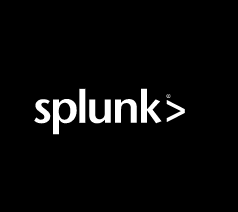
Splunk Makes a Whirlwind of News at .conf20

Splunk made a big splash today at its .conf20 virtual conference today, where it not only unveiled a dedicated machine learning environment for data scientists and unveiled a brand new suite Observability Suite, but it also announced its intentions to buy Rigor, a digital experience monitoring company, and expanded its partnership with Google.
It was a busy day for Splunk, the high-flying provider of proprietary data collection and analysis tools for machine data. The San Francisco-based company, which has more than 15,000 customers and whose stock price (NASDAQ: SPLK) has doubled in value to $34 billion since March, made a slew of announcements aimed at expanding its customers’ ability to navigate what it terms “the Data Age.”
Splunk is no stranger to machine learning, which has been used in its software for some time. But with today’s launch of Splunk Machine Learning Environment (SMLE), the company is formally targeting data scientists and other advanced data practitioners who are tasked with building machine learning models from data housed in Splunk’s data store.
SMLE helps data scientists with the ML workflow by automating deployment, centralizing model management, and automating the monitoring of the ML models at scale. The offering combines Search Processing Language (SPL) with R, Python, and Scala in a Jupyter data science notebook to enable data scientists to build models in a familiar environment.
The company also unveiled a new release of the of Splunk Data Stream Processor (DSP), an Apache Pulsar-based offering that helps customers access, process, and route data. With DSP 1.2, Splunk is providing richer event data by supporting new lookups and ML functionality. It’s also minimizing compute load and making downstream searches more accurate and efficient, the company says.
Splunk Cloud is now officially available on the Google Cloud, following a period of limited release. The offering is said to benefit customers by providing “on-demand scaling and flexibility in choosing how to consume cloud-native Splunk Cloud services,” Splunk says in a press release.
The new Observability Suite brings together several of Splunk’s offerings, including infrastructure monitoring, application performance monitoring, digital experience monitoring, log investigation, and incident response. The offering is designed for IT and DevOps teams.
Splunk unveiled two more solutions at .conf20, including Log Observer and Real User Monitoring, which are both currently in beta.Real User Monitoring is based on the company’s APM offering, and adds to it data collection from OpenTelemetry, an open source project for collecting telemetry data. Log Observer, meanwhile, provides a place for site reliability engineers (SREs) and other DevOps professionals to browse logs, “understand the ‘why’ behind application behavior,” the company says.
The company bolstered several other offerings, including its Service Intelligence for SAP offering, IT Service Intelligence (ITSI), the Infrastructure Monitoring Add-On, and IT Essentials.
Splunk also announced plans to acquire Rigor, a digital experience monitoring (DEM) company that develops advanced synthetic monitoring and optimization tools, while announcing the completion of the previously announced acquisition of Plumbr, a provider of application performance monitoring (APM) solutions that provide auto-instrumentation. Terms of the deals were not disclosed.
Related Items:
Five Ways Your Business Can Transform into a Data Innovator
Google, Splunk Partner on Multi-Cloud Data
Cloudian, Splunk Unchain Compute, Storage
Editor’s note: This article has been corrected. Splunk’s Data Stream Processor (DSP) is built atop Apache Pulsar, not Apache Kafka. Datanami regrets the error.


























